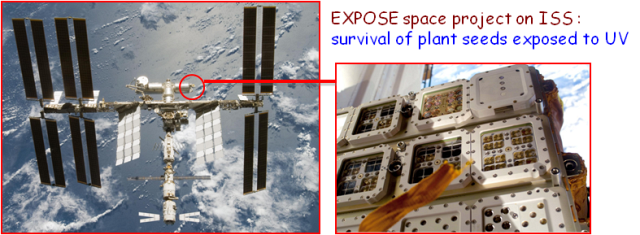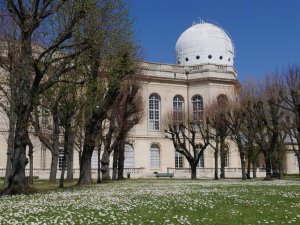High resolution VUV spectroscopy of interstellar molecules
Publié le 18 septembre 2014 par , .
Members
W-Ü L. Tchang-Brillet (Prof. emeritus), M. Eidelsberg (Voluntary Researcher), M. Glass-Maujean (Prof. emeritus), A.-M. Vasserot (Ass. Prof.), C. Blaess (Tech.), N. Champion (Engineer), A. Meftah (Ass. Prof.), C. Balança (Ass. Prof.)
Context
The huge improvements of observational data supplied by new generation of space and ground-based telescope, increase, for their interpretation, the need for highly accurate laboratory data. The group has expertise in high resolution studies of electronic spectra of small molecules, which occur in the vacuum ultraviolet (VUV) range. High resolution is necessary for determination of energy levels of these quantum systems, for probing their fundamental radiative properties, and for photodynamics studies.
Complementary laboratory techniques are involved, including mass spectrometry and ionic dissociation channels. Emission studies are carried out using the 10-meter vacuum spectrograph (resolution R=150000) of the Meudon Observatory.

Absorption studies are performed at synchrotron facilities, either on the SOLEIL-DESIRS beamline using the Fourier Transform Spectrometer (R=350000) or at BESSY (R=100000). Wavelengths with a precision better than 10-7 are obtained, as well as absorption cross-sections and predissociation and/or ionization widths.

The interpretation of experimental spectra is closely related to theoretical calculations based on ab initio potentials and coupling operator.
Current studies
The species under study are of interest to a variety of astrophysical environments.
- H2/HD/D2 : we are conducting experimental and theoretical investigations of the complex line spectra of the most abundant molecule of the Univers and of its isotopologues, which show strong non adiabatic perturbations. H2 and HD lines are candidats for probing possible cosmological variation of the fundamental constant mass ratio mu= mp/me. These studies participate to the enrichment of the MOLAT database.
- CO : The CO molecule is a tracer for H2 and gives rise to a rich photochemistry in the ISM. We are conducting exhaustive study of Rydberg series in CO and in its isotopologues, including the Rydberg-valence predissociating interactions, which are isotopically dependent.

- Molecules relevant to exobiology : Recent investigation of formamide and its methyl derivatives, diacetylene, cyanoacetylene and dicyanoacetylene, by absorption studies and electron-ion coincidence technique in the far UV. /Measurement, through CN radical interstellar UV absorption spectra, of the cosmic background radiation temperature. /Study of the part played by VUV radiation in exoplanets. /Testing the validity of published values of the heat of formation for neutral and ionic molecules.

Collaborations
Christian Jungen (LAC Orsay), Steve Federman (Univ. of Toledo, Ohio) and Glenn Stark (Wellesley College, Massachussets), H. Baumgärtel (Berlin)




